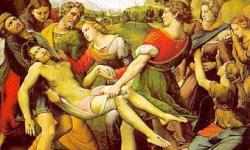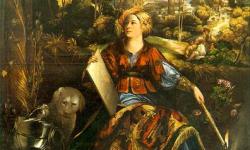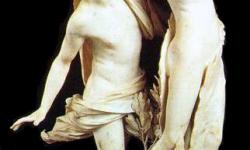Borghese Gallery in Rome. Lazio, Italy, has been sympathetically restored, with tremendous attention given to detail. Construction began in 1613 and it was intended to be both a splendid venue for summer parties and also a home for Cardinal Scipione Borghese's lavish collection of paintings and statues. Some of the original collection's works of art were later swapped for a property in northern Italy and these pieces are now displayed in the Musée Louvre in Paris. Over the years, the gaps in the collection have been filled at Borghese Gallery and in the picture gallery on the first floor there are paintings by Raphael, Bottecelli and Pinturicchio, to name but a few.
The original sculptures and paintings in the Borghese Gallery, Rome, Lazio, date back to Cardinal Scipione's collection, the son of Ortensia Borghese - Paolo V's sister - and of Francesco Caffarelli, though subsequent events over the next three centuries entailing both losses and acquisition have left their mark.
Cardinal Scipion was drawn to any works of ancient, Renaissance and contemporary art which might re-evoke a new golden age. He was not particularly interested in medieval art, but passionately sought to acquire antique sculpture. But Cardinal Scipione was so ambitious that he promoted the creation of new sculptures and especially marble groups to rival antique works.
The statue of Pauline Bonaparte, executed by Canova between 1805 and 1808, has been in the villa since 1838. In 1807, Camillo Borghese sold Napoleon 154 statues, 160 busts, 170 bas-reliefs, 30 columns and various vases, which constitue the Borghese Collection in the Louvre. But already by the 1830s these gaps seem to have been filled by new finds from recent excavations and works recuperated from the cellars and various other Borghese residences.



Borghese Gallery reviews
Login to comment